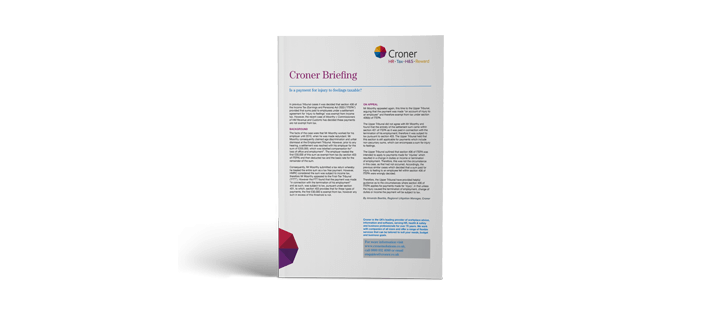Tax is unavoidable. But, if you stay informed, you can at least eliminate the stress of managing it. Let’s begin with the basics.
What are employment taxes?
If you employ people, you must register and operate a payroll scheme. And, if you run a payroll scheme, then you have to deduct Income Tax and National Insurance (NICs) from your employees and pay it over to HMRC. You’ll also have to pay employers’ NICs.
National Insurance
Let’s start with National Insurance. Employers and employees pay Class 1 NICs. As well as being a legal requirement, this is important for staff welfare—to have entitlement to receive State benefits, such as State Retirement Pension or Jobseeker’s Allowance, employees must have paid NICs.
Class 1 National Insurance consists of two contributions. One from you, the employer, and the other from your employee.
- Employee NICs—called “primary contributions”
- Employer NICs—called “secondary contributions”
The employees’ contributions are deducted from their pay. How much you deduct, and how much you also have to pay, is dependent on how much they earn.
The current standard deduction rates for a regular employee are:
- £118 to £166 a week—0%
- £166.01 to £962 a week—12%
- £962 or more a week—2%
The current standard rates of employer’s NICs are:
- £118 to £166 a week—0%
- £166.01 to £962 a week—8%
- £962 or more a week—8%
It’s important to note that these rates may differ depending on the age and circumstances of the employee, for example, apprentices aged under 21, or employees over State Pension Age.
You can find out more about National Insurance rates on the government website.
Income Tax
Employers must deduct Income Tax from their employees under the Pay As You Earn (PAYE) scheme. For PAYE, you deduct a percentage of an employee’s income depending on how much they earn. The current tax rates are as follows:
- Personal allowance: Up to £12,500—0%
- Basic rate: £12,501 to £50,000—20%
- Higher rate: £50,001 to £150,000—40%
- Additional rate: Over £150,000—45%
Employer tax obligations
As an employer, you must pay NICs and make the appropriate deductions from employees. You must also provide a payslip showing tax and NIC deductions.
Staff who suspect their employer is not deducting tax or NICs correctly from their wages can report them to HMRC.
Also, by 31st May each year, you must provide each employee with a P60. This shows the employees’ total gross pay and total amount of tax and NICs deducted.
Further employer tax liabilities include providing information to HMRC. You must report payroll data online each time you pay your employees—this is Real Time Information (RTI).
It must also include staff earning below the Lower Earnings Limit (those not paying National Insurance).
What is Small Employer Relief?
If you class as a small employer, you will be able to reclaim 103% (in other words, the whole amount plus a further 3%) of the Statutory Payments made to employees, such as SMP, SPP, SAP, and ShPP.
To qualify you must have made total NIC payments (both employer and employee) of £45,000 or less in the last complete tax year before the employee’s qualifying week for parental leave.
Even if you don’t qualify as a “small employer”, you can still reclaim 92% of the Statutory Payments made to employees.
You can reclaim the appropriate percentage by simply deducting that amount from payments you are due to make to HMRC.
How to check employment status for tax
Self-employed workers don’t rely on an employer to pay income tax and make reductions. So, it’s important to understand which members of your workforce are technically employed and which aren’t.
An individual is probably self-employed if the majority of the following are true:
- They’re in business for themselves
- They can decide what work they do and when, where, or how to do it
- They can hire someone else to do the work
- They’re responsible for fixing unsatisfactory work in their own time
- You pay them a fixed price for their work regardless of how long a job takes to finish
- They use their own money to buy assets, tools, and equipment and cover running costs
- They can work for more than one client
If you’re still uncertain, you can use the government’s tool here.
Employment taxes in the UK
Rates change on 5th April each year. Not only that, the rates may differ depending on where you are in the United Kingdom because both the Scotland and Wales have devolved powers to set their own Income Tax rates.
This summary covers the basics of employer taxes in the UK. But if you want information on the various types of tax relief available, the options available for operating your own payroll, and more, keep an eye on our blog page or contact Croner-i.
Or, if you can’t wait, speak to a Croner expert today on 0808 145 3380.



